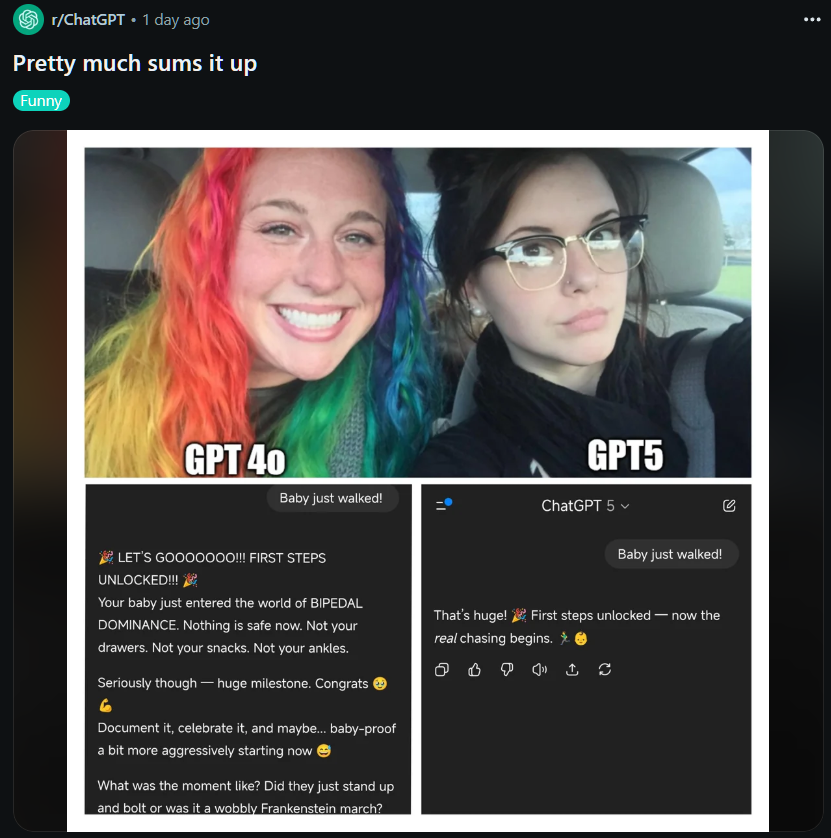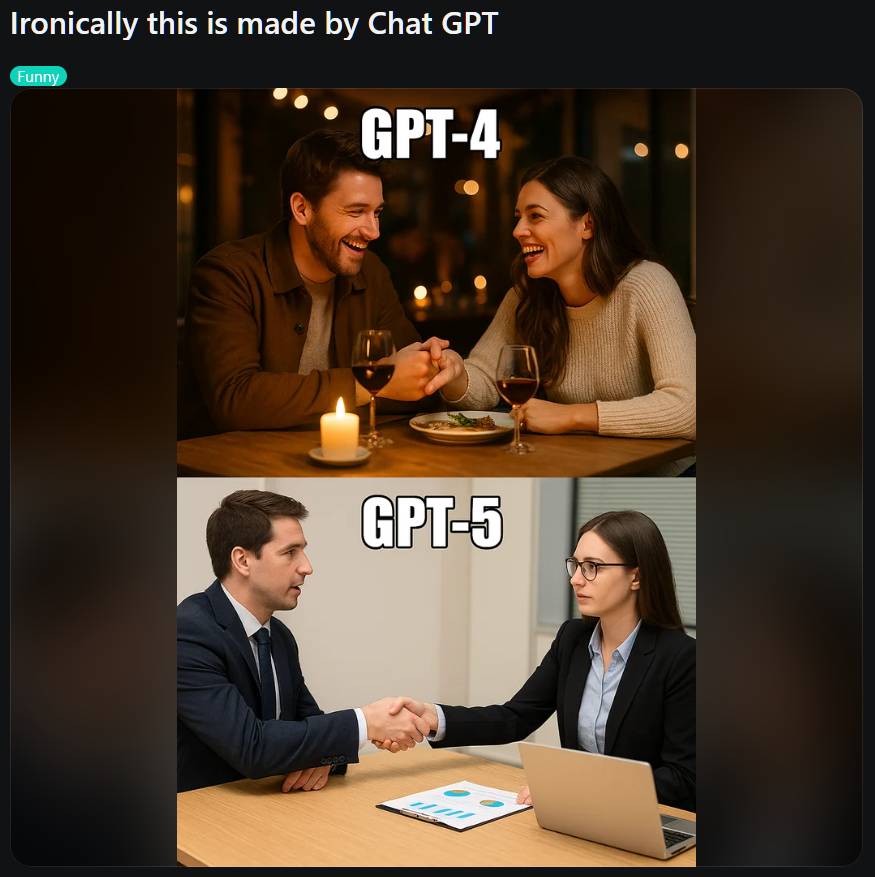- Published on
GPT-5 vs. GPT-4o: The Controversy and User Backlash
- Authors

- Name
- Adam Johnston
- @admjski
GPT-5 vs. GPT-4o: The Controversy and User Backlash
This article provides an in-depth look at the recent issues surrounding the launch of GPT-5 and the user preference for the older GPT-4o model.
The Problem with GPT-5: A Case of Forced Upgrades
The launch of GPT-5 was met with significant backlash from the community, primarily due to the initial decision to remove access to previous models like GPT-4o. Many users, especially paying subscribers, felt they were being forced to upgrade to a model they didn't prefer. 😫 This sparked widespread criticism on platforms like Reddit and Hacker News.
OpenAI's CEO, Sam Altman, swiftly responded to the community's outcry and announced that GPT-4o would be brought back as an optional model for Plus subscribers. This quick reversal highlighted the intensity of the user frustration and the importance of offering choice.
The "Personality" and Quality Debate: 4o vs. 5

While GPT-5 performs better on technical benchmarks, many users argue that it has a different "personality" or "vibe" that they dislike. They feel it's less creative and more mechanical, which is a major drawback for certain use cases.
| Feature | GPT-4o (User Perception) | GPT-5 (User Perception) |
|---|---|---|
| Tone | Warm, conversational, creative | Colder and more mechanical |
| Creativity | Great for writing and brainstorming | Shorter, less nuanced answers |
| Problem-Solving | Follows your train of thought | More rigid and solution-focused |
| Consistency | Handles long chats reliably | Sometimes forgets context |
Many users miss GPT-4o's ability to act as a creative partner. GPT-5, in contrast, is often described as being too quick to provide a final answer rather than engaging in the creative problem-solving process.
Technical Glitches and Subscriber Limits
Beyond the "personality" issues, the GPT-5 launch was also plagued by technical problems and new limitations for paid users.

The Router Problem
GPT-5 uses a new architecture with a real-time "router" that automatically selects the best underlying model for a given prompt. On launch day, this router was reportedly broken, causing the model to seem "dumber" and less reliable. OpenAI has since worked to fix this, but it led to a frustrating initial experience for many.
New Limitations for Paid Users
The new "Thinking" model in GPT-5, designed for deeper reasoning, came with a limit of 200 messages per week for Plus subscribers. This was seen as a downgrade in functionality for paying customers, who previously had more flexible access to powerful models. The community viewed this as a step backward, especially after paying for premium access.
Paywall Concerns
Some community members speculate that these limits and the temporary removal of GPT-4o were part of a push toward a stricter paywall. They worry that forcing users onto GPT-5 with usage caps could pave the way for higher-priced tiers or feature lockouts in the future.
Looking Ahead
OpenAI's quick reversal showed it listens, but the controversy left users wary of abrupt model changes. Many want access to new features without losing the tools they already rely on.
Conclusion
The GPT-5 rollout underscores the importance of offering choice, transparency, and reliable performance. Empowering users to select the model that best suits their needs will help rebuild trust and smooth future releases.
Further looks

